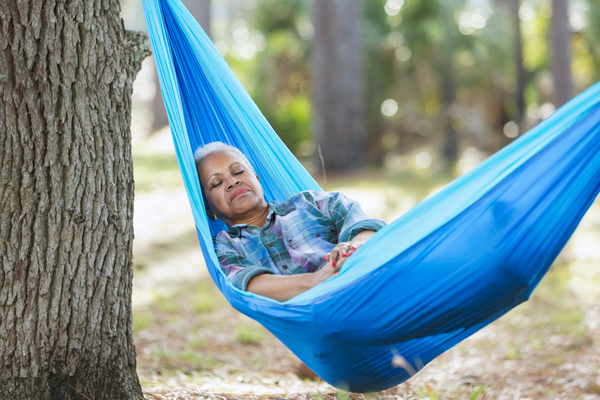Rocking babies to sleep—to both quiet the wails of youth and preserve the sanity of young parents—has been commonplace dating back to prehistory. Similarly, rhythmic motions like the muted clank of a train ride coax many of us adults into an instant slumber—but why?
Two new studies published today in Current Biology suggest our brains are evolutionarily programmed to respond to rocking. The research shows in both humans and mice, rocking to sleep may have significant health benefits such as better quality of sleep and even improved long-term memory formation.
In the first study the authors used electroencephalography (EEG) recordings to analyze the brain responses of 18 young healthy adults who spent three nights in a sleep lab. The first night was intended to acclimate them to their new sleep environment; the second they spent in a slowly rocking bed; the third—one week later—in a stationary bed.
On supporting science journalism
If you're enjoying this article, consider supporting our award-winning journalism by subscribing. By purchasing a subscription you are helping to ensure the future of impactful stories about the discoveries and ideas shaping our world today.
Even in people who were already good sleepers, rocking shortened the time it took for subjects to fall asleep, and also to reach non-REM sleep, which correlates with improved sleep quality. The rockers also had fewer arousals and maintained deep sleep for a longer period of time.
Curious if rocking might have any influence on memory, study subjects were also tasked with memorizing 46 random word pairs. On both their rocking and non-rocking sleepovers they were then presented with the first word and asked to recall the second after a night’s sleep. A night of rocking improved their recall threefold.
Finally rocking also was found to synchronize brain waves during non-REM sleep in the thalamocortical networks of the brain, a system known to be involved in both sleep and memory consolidation, the nocturnal process during which the brain processes and stores long-term memories. “What was surprising…is that we clearly showed that specific brain oscillations of non-REM sleep are synchronized and entrained by the rhythm of the bed motion,” says neuroscientist Laurence Bayer of the University of Geneva in Switzerland, who led the new study. Bayer likens the findings to our intuitive appreciation that a slowly rocking hammock can relax us and do wonders for our mood. “This is potentially a very promising avenue for future clinical research,” he notes.
Previous research—and millennia of relieved parents—support the fact rocking helps coax infants to sleep. And the new findings suggest the same is true in adults. Yet it was previously unknown whether or not the same is true in other species.
The second study found that, at least in mice, it is. Like in the human study, rocking shortened the time it took the mice to fall asleep and increased the amount of sleep time, as measured by EEG recordings. Unlike humans, however, rocking did not seem to induce deeper sleep in the rodents. The authors suspected rocking might exert its influence on sleep by stimulating the vestibular system, the sensory organs in the inner ears of mammals that control our sense of balance and spatial orientation. Using a strain of mice with impaired vestibular function, they showed this is indeed the case. Specifically, half of the mice used in the study lacked “otoliths,” small calcium carbonate–based particles that bob around two compartments of the inner ear and allow mammals to perceive vertical and horizontal acceleration. Mice without these otolithic organs showed none of benefits of rocking during sleep. “Since immemorial times we’ve rocked our babies, and often ourselves, to sleep,” says lead author on the new paper, Konstantinos Kompotis, at the University of Lausanne, also in Switzerland. “Our study provides new insights into the neurophysiological mechanisms underlying this phenomenon.”
“These findings are critically important,” adds Bryce Mander, an assistant professor of psychiatry and human behavior at the University of California, Irvine, who was not involved in these studies. “Before these papers, both the mechanisms and the functional significance of the association between vestibular-related rocking and sleep were completely unknown.” He notes the new findings open the door to testing non-invasive behavioral interventions in those with impaired sleep and memory.
Kompotis says the two studies could lead to improved treatments for people who have trouble falling asleep as well as for those with inner ear defects. “Rocking cradles for babies; rocking beds for younger adults; rocking chairs for the elderly—there are ongoing efforts out there that could improve our sleep and well-being,” Kompotis adds. But for those hankering to add rocking to their fitness routines, he urges patience. “We should understand the phenomenon in its entirety before we start hanging hammocks in our—and our pets’—homes.”
